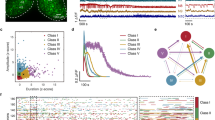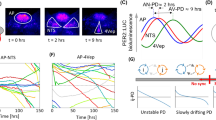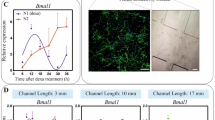Abstract
The suprachiasmatic nuclei (SCN) control daily oscillations in physiology and behavior. The gate-oscillator model captures function heterogeneity in SCN and has been successful in reproducing many features of SCN. This paper investigates the mechanism of phase organization in the gate-oscillator model and finds that only stable fixed points of the phase transition function are essential to phase organization. Extending the model with a dead zone of the phase transition function and the propagation delay of the gate signal which represents the spatial structure of SCN, the author discusses how the experimentally reported phase distribution, including phase splitting of animals in LL condition, and fixed phase difference between neurons of SCN could be understood in the framework of the gate-oscillator model. The extended model provides two mechanisms for phase splitting and gives a testable prediction that the two clusters of neurons of the phase splitting animal differ in their inherent periods.
Similar content being viewed by others
Article PDF
Author information
Authors and Affiliations
Rights and permissions
About this article
Cite this article
Zhao, G. Phase organization of circadian oscillators in extended gate and oscillator models. Nat Prec (2009). https://doi.org/10.1038/npre.2009.3642.1
Received:
Accepted:
Published:
DOI: https://doi.org/10.1038/npre.2009.3642.1



